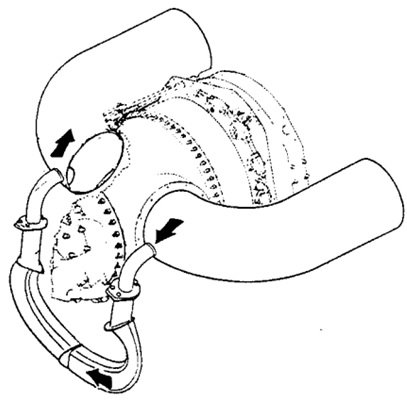King Air 200 engine question
Thread Starter
Join Date: Jul 2019
Location: Argentina
Posts: 1
Likes: 0
Received 0 Likes
on
0 Posts
King Air 200 engine question
Hi there! I am new to the forum, so I am not sure how to use properly. However, I have a question about the King Air 200. In the the exhaust section, outside the nacelle, there is a metal piece much like a tube or something similar, which you can touch with the hand. I have looked the manual and could not find what is that for. If anyone knows the answer I would be really grateful.
Thanks a lot.
Thanks a lot.
Join Date: Oct 2007
Location: Wherever I go, there I am
Age: 43
Posts: 804
Likes: 0
Received 0 Likes
on
0 Posts
The only thing that readily comes to my mind would be the exhaust shroud itself, but I'd not touch it too soon after the engine was shut down. The purpose of these is to deflect the exhaust gases backwards, just like any other tail pipe. This is readily evident on a King Air (or any other aircraft using the same setup) because the PT6 is a reverse flow engine; the turbine and exhaust sections sit in the front of the engine, while the intake and compressor sit near the rear.
As I sit here, really the only other thing that might come to mind would be the drain mast, but that sits back behind the nacelle and gear doors - nowhere near the exhaust. It's not seen in the picture below, but the exhaust shroud is rather prevalent.

Photo Credit: Meisner Aircraft
As I sit here, really the only other thing that might come to mind would be the drain mast, but that sits back behind the nacelle and gear doors - nowhere near the exhaust. It's not seen in the picture below, but the exhaust shroud is rather prevalent.

Photo Credit: Meisner Aircraft
Dont have a photo sorry, but I’m thinking you might be referring to the cowl anti ice system.
BB-1266, BL-129 and after have exhaust gas from the left exhaust stack flow through the cowl lip (the shiny silver bit at the air intake entry you can see in the pic posted above by +TSRA) and then exit the via the right stack.
Older aircraft just deflect exhaust gas down into each end of the lip, and this then escapes out the bottom of the lip.
This happens automatically, no need to turn it on or off.
BB-1266, BL-129 and after have exhaust gas from the left exhaust stack flow through the cowl lip (the shiny silver bit at the air intake entry you can see in the pic posted above by +TSRA) and then exit the via the right stack.
Older aircraft just deflect exhaust gas down into each end of the lip, and this then escapes out the bottom of the lip.
This happens automatically, no need to turn it on or off.
Join Date: Oct 2007
Location: Wherever I go, there I am
Age: 43
Posts: 804
Likes: 0
Received 0 Likes
on
0 Posts
Dont have a photo sorry, but Iím thinking you might be referring to the cowl anti ice system.

Exhaust shroud showing cowl heater tube. Photo Credit: eBay

Graphic, Cowl Anti-Ice System. Photo Credit: I wish I could give credit, but I don't know where this photo originally came from. It has been a part of every PT6 PowerPoint I remember seeing for the last 15 years.
Join Date: Feb 2001
Location: Hants, UK
Posts: 1,064
Likes: 0
Received 0 Likes
on
0 Posts
'The only thing that readily comes to my mind would be the exhaust shroud itself, but I'd not touch it too soon after the engine was shut down.'
True, but it's great for warming your hands on a cold day waiting for the pax on intermediate sectors!
True, but it's great for warming your hands on a cold day waiting for the pax on intermediate sectors!

Join Date: Oct 2007
Location: Wherever I go, there I am
Age: 43
Posts: 804
Likes: 0
Received 0 Likes
on
0 Posts
What ensures clockwise direction of gas flow in this setup?

Photo Credit: nifs (e-bay)
You'll notice in the picture above that there is a hole formed into the shroud, welded onto which is a pipe leading away from the shroud. Above the hole is a cup.
In the left exhaust shroud (pictured), this cup directs some of the exhaust gases into the hole, then through the pipe.
In the right shroud, this cup could be reversed - that is, the open side would face away from you. The right shroud has, if you will, two sources of "exhaust" - one from the engine and one from the heated air intake.





